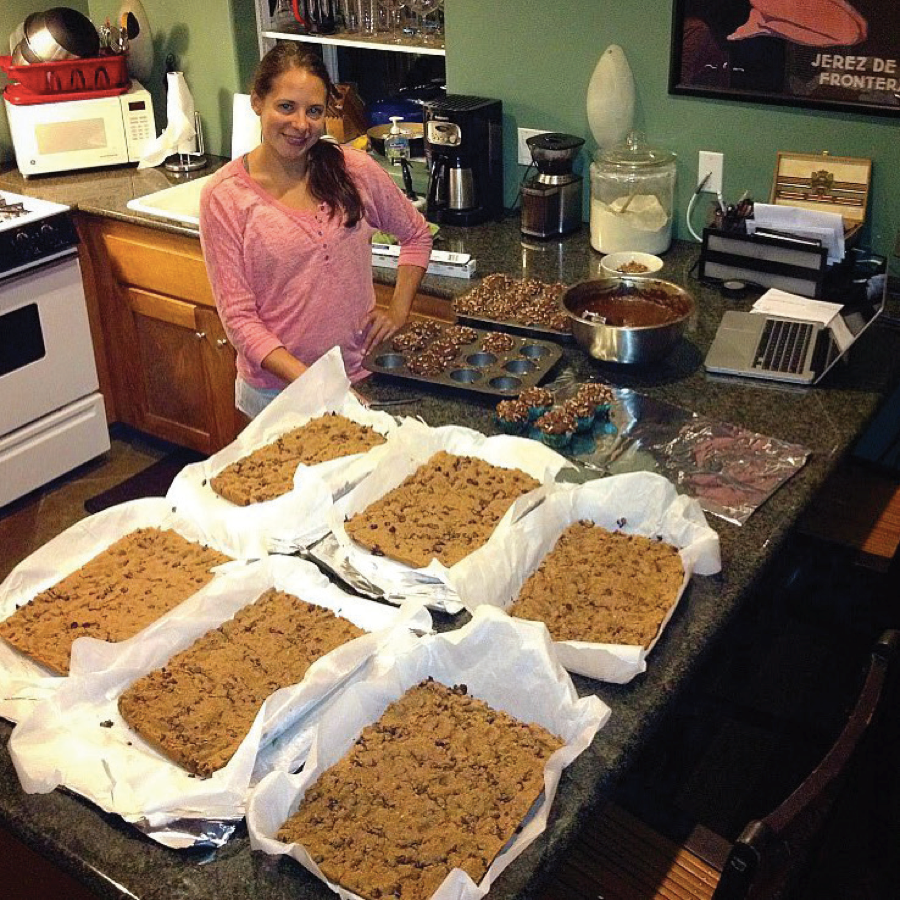This Woman Is Part Of The New Revolution Of Real-Food Bars

As the healthy food boom explodes around the country, it’s worth taking note of the strange new boxes and wrappers lining the shelves. Sometimes an entrepreneur with a particular palate or dietary need will decide to make a little energy-delivering snack that ends up snowballing into a big-time business. It’s how Clif Bar started in 1990.
We talked with athlete, chef and entrepreneur Jess Cerra about her bar company—JoJé—which she describes as part of “this new revolution of real-food bars.” In five years, she’s gone through five main steps to get to the point of widening distribution. If nothing else, Cerra says, “There’s some sort of satisfaction that people really like the bars.”
1—An Idea
In 2011, Cerra started making homemade energy bars for herself and professional triathlete Lesley Paterson, a friend and coach who had a tough time finding gluten-free fuel. Cerra had the goal of making it taste like a cookie and her first two flavors were each a favorite: peanut butter chocolate chip for Cerra and white chocolate coconut blondie for Paterson.
2—The Research
With Cerra’s education in exercise physiology and her experience as a private chef, she focused on quality ingredients and healthy fats to fuel endurance athletes. She created a bar with less processing, and not including gluten also removed a potential irritant. “They appeal to more people,” says Cerra, who started getting requests from friends and soon found herself shipping dozens at a time across the country. An elite cyclist, Cerra ate two bars during her first professional race and had a great finish, placing eighth. “That’s when I realized that I had figured it out.”
3—Starting a Business
Two years ago, she decided to make the business official and found a commercial kitchen in San Diego near where she lives. She started supplying “Harmony” bars to shops in Southern California and the subscription sports-nutrition retailer The Feed. By securing a location that was already making whole-food bars, she was able to share costs for ingredients. She learned about health codes and issues such as water content and nutrition labels.
4—Learning Process
Soon Cerra found an issue with the name of the bars: “Harmony” had a trademark conflict. She needed to change her recipes, so they would be shelf stable for longer—eggs and almond milk wouldn’t work anymore. She also switched from agave to honey, because it’s a natural preservative. Finding the best new concoctions, ideal baking temperatures and precise cooking times was a challenge. The off-season from racing—when she normally spends her days developing recipes and trail running—proved to be the best time to figure it all out.
5—Recipe for Success
After about nine months without producing bars for sale, Cerra’s new bars hit stores this spring. JoJé—the label is a combo of her and her business partner John Abate’s names—comes in six flavors now, including espresso chocolate almond, lemon blueberry quinoa, apple walnut cake (“like grandma’s spice cake”) and the newest one, pancakes and bacon, which took three rounds of testing to get it right. “You have to like the taste of smoky bacon,” she says.
The business is still small—they haven’t been able to pay to include certified buzzwords such as “fair trade” or “organic” on the wrappers. Marketing efforts focus on having a handful of sponsored athletes and supplying product to The Feed. During the lull in production, Cerra says, “I’ve been making them at home. I can’t race without them.” And she admits the market is saturated with competitors’ offerings, but she has no plans to stop. “People love the bars. How can we not keep doing this?” She adds, “We want to become a nationally known brand and then internationally known…hopefully, one day, we can be a household name like Clif Bar.”



